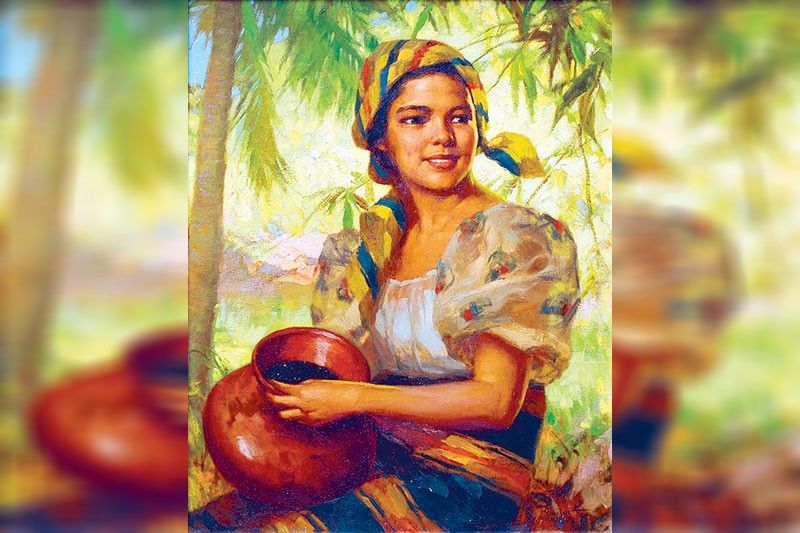500 years of Filipina heroes

Caught in between the double quincentennial of Magellan’s arrival in the Philippines and his demise by Lapulapu’s sword is the third quincentennial of Juana’s baptism and her teary-eyed welcome of the Sto. Nino.
In one fell swoop in 1521, the Filipino woman was transformed from equal partner to princess-on-a-pedestal; from a somewhat forward creature who had a mind of her own to a mother-figure overcome by the Baby Jesus (or so say the Pigafetta chronicles of Magellan’s voyage).
The effect of that turning point must count for something because the Filipino heroines on record are sadly few and far between: one can count them on the fingers of one hand.
However, as the last month of the 500-year celebration comes into view, the National Historical Commission will present a craftily constructed webinar titled “The 500th Anniversary of the Filipino Woman’s Heroism: Through Victory and Humanity, sa Tagumpay at Pakikipag-Kapwa Tao” on Tuesday, Nov. 16, at 9 a.m. It will feature an all-star panel of female historians led by Professor Emeritus Dr. Luisa Camagay of the University of the Philippines.
Elsewhere in real life, a point-of-view that the pandemic has taught us to tell apart from Zoom meetings, the Filipina is far from docile, although not in blood and war.
My favorite barometer happens to be the world of art and culture. While not a single Filipino woman has been named National Artist in the field of visual arts, there is one woman who reigns supreme in the bruising competition of the auction world. (No waiting lists here, nor the need to curry favor with the gallerists; the auctions are a free-for-all, where victory goes to the highest and most aggressive bidder. One supposes it’s the same kind of rush as when you skewer a foreign conquistador.)
That woman is Anita Magsaysay-Ho, who first broke the glass ceiling in 1952 by taking the first prize at the Art Association of the Philippines’ annual competition. (It will be the 70th anniversary of her having done this next year in 2022; and she never turned back. In fact she repeated the feat, just to prove it wasn’t a fluke, in 1960, against the likes of Fernando Zóbel, Jose Joya and Arturo Luz, who came up behind her exactly in that order.
Anita has been making headlines these last few years for reeling in extraordinarily high auction prices for her works. There will be a much-awaited one coming up for the León Gallery Kingly Treasure Auction this Dec. 4, entitled “Fish Vendors” from the collection of prominent surgeon Dr. Robert Macasaet and his wife Teresita.
There are many other examples of the Filipina character to be found on paper and canvas at these auctions. Perhaps the most extraordinary among them are a set of 16 stunning watercolors from the coveted collections of Don Benito J. Legarda, Jr. Don Beniting was an acknowledged expert on the Manila-New England trade in indigo, hem and sugar that made many trading houses on the eastern seaboard incredibly wealthy and also eager to show off the sources of their newfound wealth. Those particular “trophies of trade” as art historian Florina Capistrano-Baker calls them are the “Tipos de Pais (People of the Country)” created by such geniuses as Justiniano Asuncion. Legarda had the good fortune of having an entire set that were all signed by this particular master, which are about as uncommon as a Filipina general.
The Justiniano Asuncion watercolors capture the Filipina at her most vain — in the 19th-century equivalent of an influencer’s “OOTD” (Outfit of the Day). There is one of her scrubbing the heel of her foot (the standard of beauty then was to have them seductively pink) in the same way that J.Lo probably administers her Glow Serum or Kim Kardashian puts on her Fendi Skims; another of the Filipina damsel on the way to church properly veiled and accessorized (which would be the Manila social equivalent of a Hollywood red carpet); and, of course, another at her sashimi-bake, Christmas-cookie entrepreneurial best. (In the case of the Asuncions, she is a mat-maker and vendeuse.)
In between these watercolors and Anita Magsaysay-Ho, however, the Filipina was trapped in a world created by the titan of the Philippine landscape, Fernando Amorsolo, who portrayed his women as rosy-cheeked country girls. There’s one particularly fetching one from 1937, holding a clay jar. It’s the kind of image that has captivated Filipinos and foreigners alike. There is also an oversized portrait by CW Andrews, the Britisher who would make a small fortune selling his illustrations of Filipinas to the London press. She too is painted with a banga, although in a far more provocative pose.
And for good measure, there is a trove of pre-Spanish gold jewelry, of the same kind that Juana may have worn to the baptism administered to her entire village. They are in the shape of half-moons and are exquisitely decorated. (These belong, incidentally, to the accomplished Dra. Remedios Suntay, a pivotal figure at the bedside of many a Manila society birth.)
Will the Filipina finally break out of the typecasting that has fated her future — and therefore that of her nation? All we have to do is think of Hidilyn Diaz who has morphed into a Swatch-wearing goddess. Or better yet, let’s ponder on whether it will be a grieving madonna or a “strong woman” in our near political future.
* * *
Regardless of their feminist inclinations, everyone is invited to register at https://bit.ly/500-Years-of-The-Filipino-Womans-Heroism and visit the National Historical Commission’s website and official Facebook page for the details of the event.



















